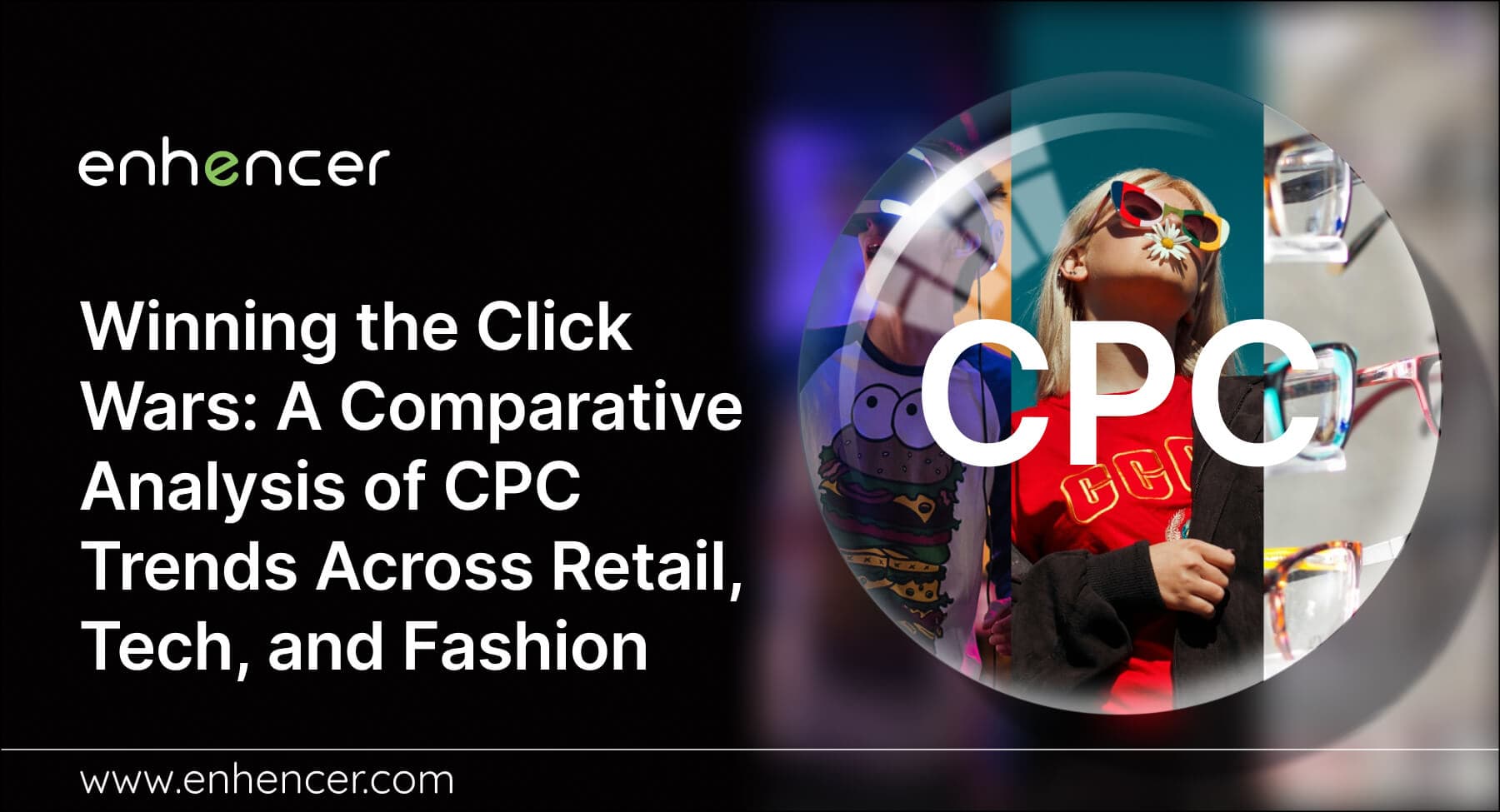It doesn't need much talk. Technology has completely reshaped how we shop, pushing the world from traditional stores to online havens. This shift isn't just about convenience for us; businesses have had to adapt too, constantly chasing the latest e-commerce trends.
From the magic of AI Ads to the power of digital marketing, innovative tech has streamlined processes and created cutting-edge shopping experiences for everyone. Considering this thrilling technological revolution taking place, I will delve into a detailed analysis of industry-specific CPC trends comparing retail, technology, and fashion in this article.
Understanding CPC for Smarter Advertising
Before we jump in, understanding what CPC means is key!
We could start writing a manifesto for Clickonomics 101 by asking, "How does CPC work?" but since that's not our primary focus here in this article, I'll keep it brief. Here is an explanation of how CPC works:
Unsure how much you're paying per click on your ads? It's easy. Let's start with the essentials. Here's how to calculate CPC. There is a straightforward logic behind the calculation of cost per click. It requires two variables.
CPC can be calculated by dividing the total cost of your ads by the number of clicks to determine the cost per click.
Cost per Click (CPC) Formula = Total Cost of Your Ads / The Number of Clicks
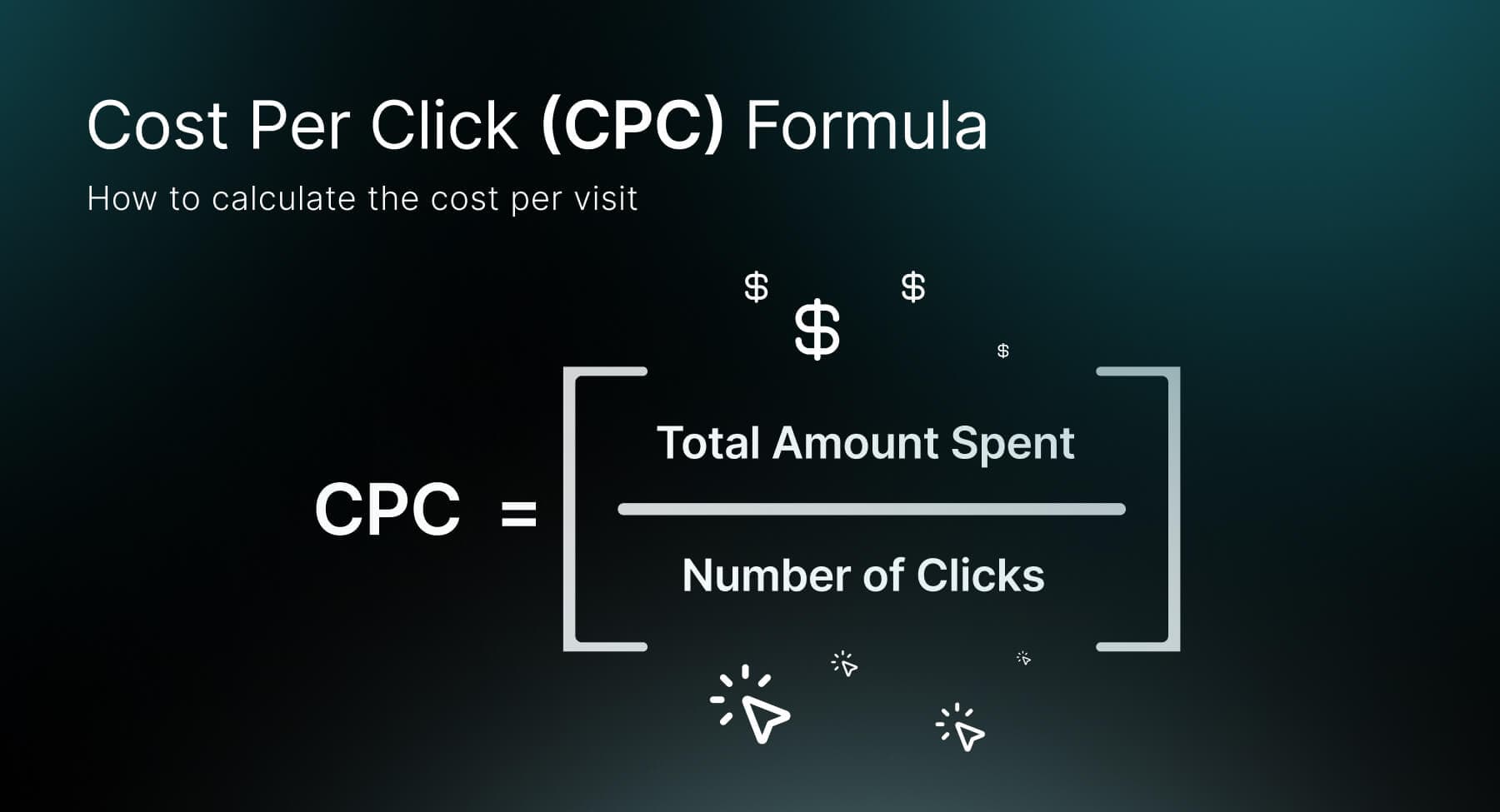
CPC is a cool pay-per-click system for online ads that lets you pay only when someone clicks on your ad. With the CPC model in online advertising, you only pay for clicks, providing measurable results for budget allocation.
Gone are the days of throwing spaghetti at the wall in advertising. CPC lets you target potential customers with laser focus, only paying when they "take the bait" and click your ad. It's a precise way to spend your budget, ensuring you reach the right people at the right time.
Decoding the Click: A Deep Dive into CPC Across Industries
All right, CPC experts.
Now is the time to fulfill the promise of in-depth analysis we made in the
title.
The retail, fashion, and technology industries have distinct CPC trends
influenced by various factors. Each one has a unique nature, like the
diversity found in the wild. Let's observe and determine which one thrives
best. With an open mind, take a guess and see for yourself—it's a fun
challenge.
CPC Comparison with Numbers
Understanding the average CPC spending for all industries can be a valuable starting point. The average cost per click in Google Ads in 2023 is $4.22. (source: Wordstream)
When it comes to clicks, he fashion industryt walks the runway at a bargain price. At an average of $0.69 , clicks are significantly cheaper than clicks in the tech industry, with an average price tag of $3.80. (source: Statista)
The average cost per click (CPC) in the retail industryis $4.22, but it varies across different product categories. Clothing, for instance, has a lower an average of $0.69 , clicks are significantly cheaper than clicks in the average CPC of $2.72.. (source: chariot creative)
Fashion clicks are the cheapest among these three, followed by retail, then tech. The fashion industry offers the lowest average cost per click, while tech clicks come at a premium compared to both fashion and retail.
Behind the scenes
Retail Industry: Unveiling the Cost of Consumerism
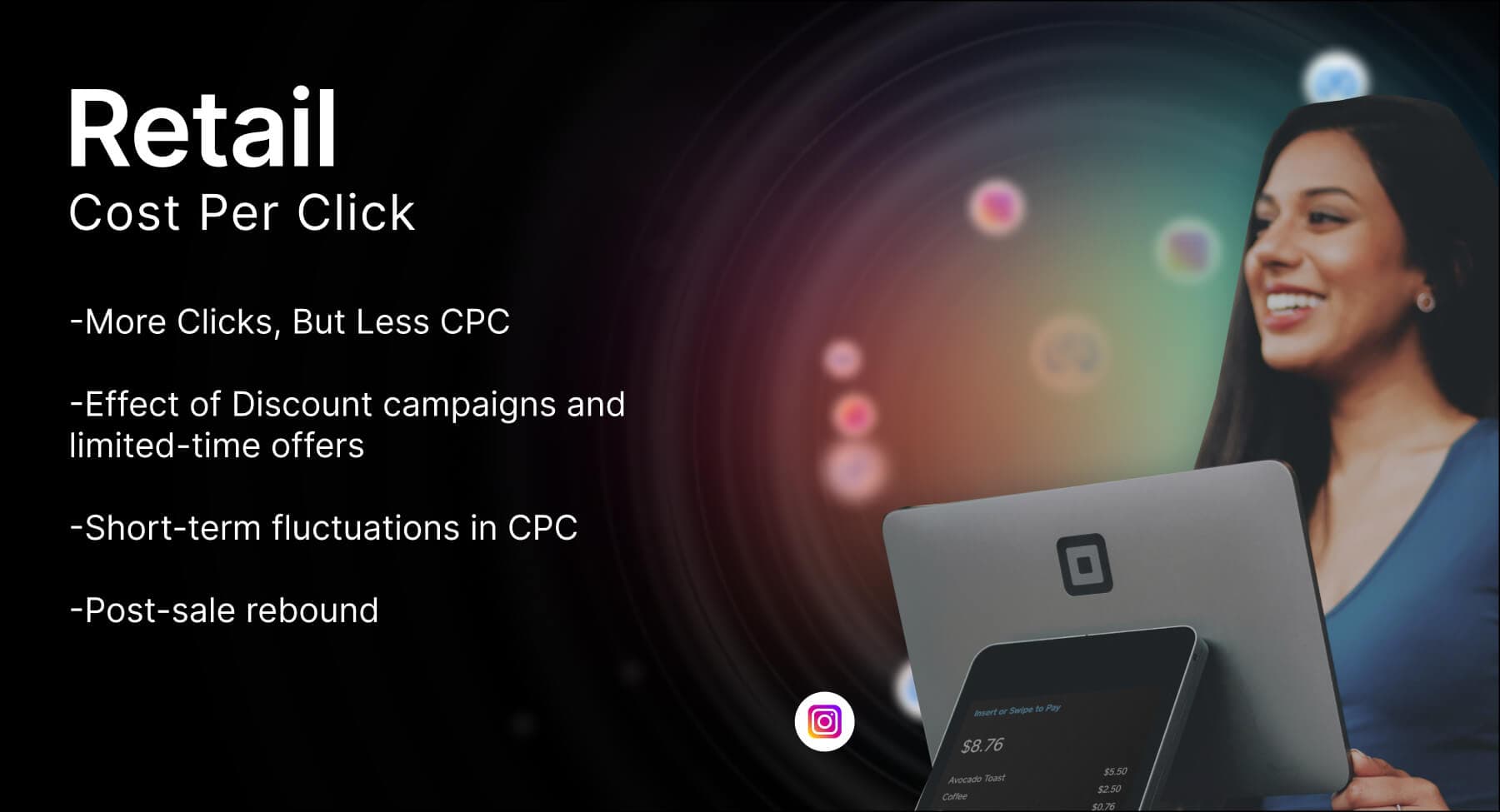
Where competition is relatively high, challenges begin. The competitive scenario in the retail sector often leads to higher CPCs. Advertisers should put more effort into increasing the number of clicks on their ads, which may slightly increase their costs.
More Clicks, But Less CPC
Discount campaigns and flash sales
may seem like a surefire way to attract customers, but their impact on
cost-per-click (CPC) is a double-edged sword.
The Click Surge: These campaigns can lead to a significant increase in ad clicks due to lower prices and limited-time offers. While this can temporarily lower your average CPC by spreading the cost across more clicks, there's a catch…
Quality over Quantity: While clicks increase, the quality of that traffic might be lower. People clicking might be primarily interested in discounted products and less likely to convert them into actual sales at full price. This can ultimately lead to a decrease in your return on ad spend (ROAS).
Traffic Spikes and CPC Fluctuations: Expect temporary traffic spikes on your website or landing page during discount periods. This sudden influx can cause short-term fluctuations in your CPC metrics.
The Post-Sale Rebound: Once the discount period ends, click volume, and CPC are likely to return to pre-sale levels.
In essence, discount campaigns can be a gamble. You might get more clicks, but the potential for lower conversions might not justify the cost. s
Fashion Forward: Measuring the Value of a Vogue Click
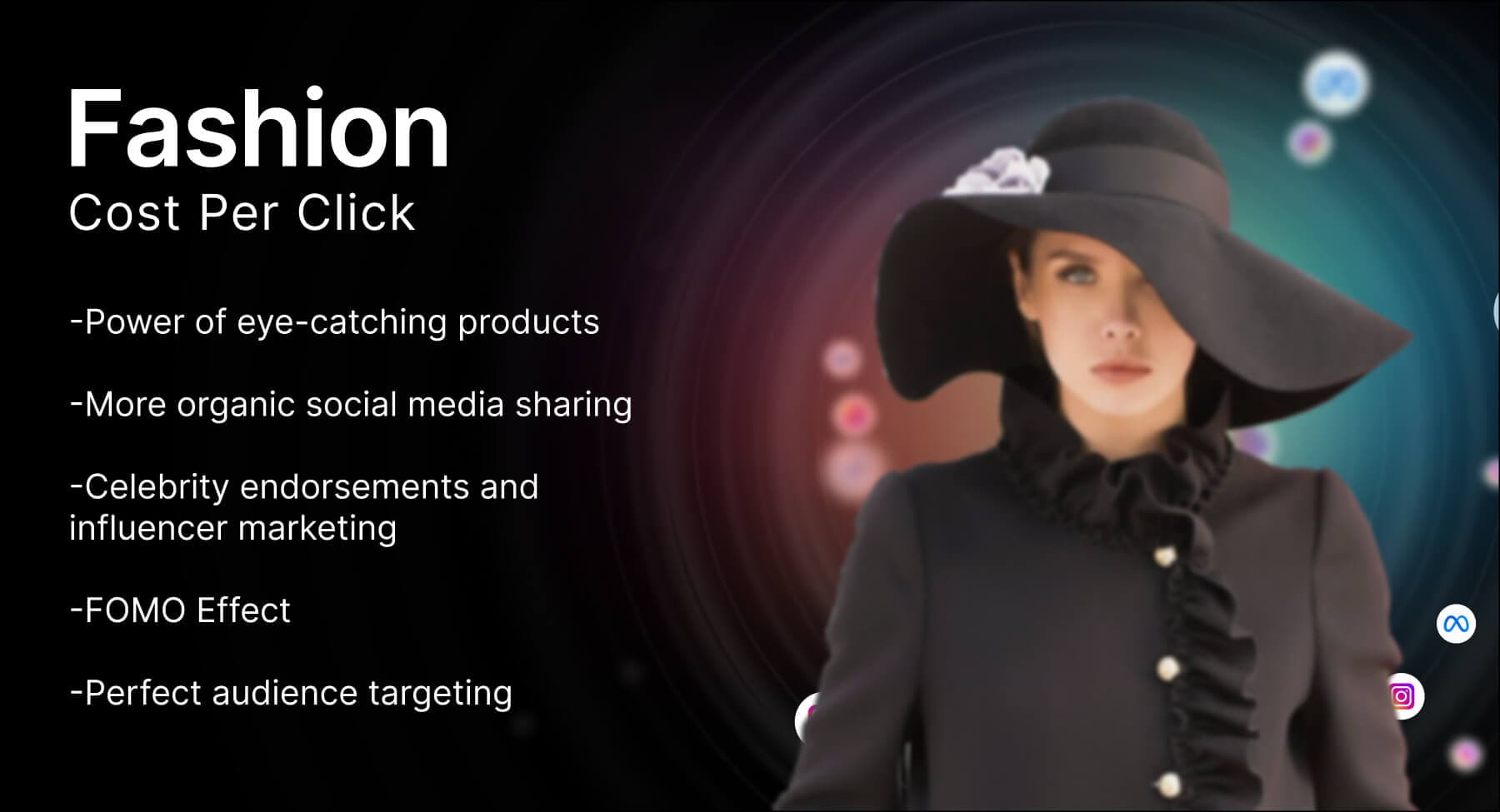
The fashion industry is lucky with cost-per-click advertising because eye-catching products work wonders! Their visually appealing products lead to more organic social media sharing, reducing advertising costs. Win-win! The power of celebrity endorsements and influencer marketing should not be underestimated either.
If you want, we can also talk about other things to remember when checking out CPC rates in the fashion industry. One of them is undoubtedly the Fomo effect.
Fashion trends tend to change quickly. This creates a sense of urgency among consumers who want to stay up-to-date with the latest styles. The sense of urgency created by the constantly changing fashion landscape can lead to higher click-through rates on ads, as consumers are eager to see what's new and take advantage of any special promotions.
It wouldn't be fair to attribute the success of the fashion industry's advertising campaigns to sheer luck. Fashion advertisers put in great effort to target audiences effectively. Though I must admit, I've been waiting for the right moment to reveal the real secret behind this success. The fashion industry often targets a specific demographic, which makes it easier for advertisers to reach their desired audience.
The fashion industry isn't just slaying the style game; they're crushing click-through rates too! How? By being an audience targeting ninjas. They were brilliant and used some wise technological tools like geotargeting, retargeting, and lookalike modeling to ensure they were reaching the right people at the right time. This laser focus on who sees their ads and their love for innovation and data is the real magic behind CPC success of the fashion industry.
Struggling to reach your target audience? Why not adopt the practices of successful brands using AI Ads? Enhencer AI Ads offers a 14-day free trial specifically for e-commerce businesses. This trial allows you to explore the platform's features and see if it can help you achieve your marketing goals before committing to a subscription.
Fashion has solidified its position with high-budget marketing campaigns that were invested in past years. With the constantly changing rules of e-commerce, it's crucial to keep up with the latest trends, such asAI advertising AI advertising, even if you're in the fashion industry.
Why are fashion clicks cheaper? It all boils down to the unique ways the fashion industry operates. The fashion industry's specific characteristics play a significant role in its lower cost-per-click (CPC) compared to other sectors.
Tech Titans: Exploring the Price of Progress in Clicks
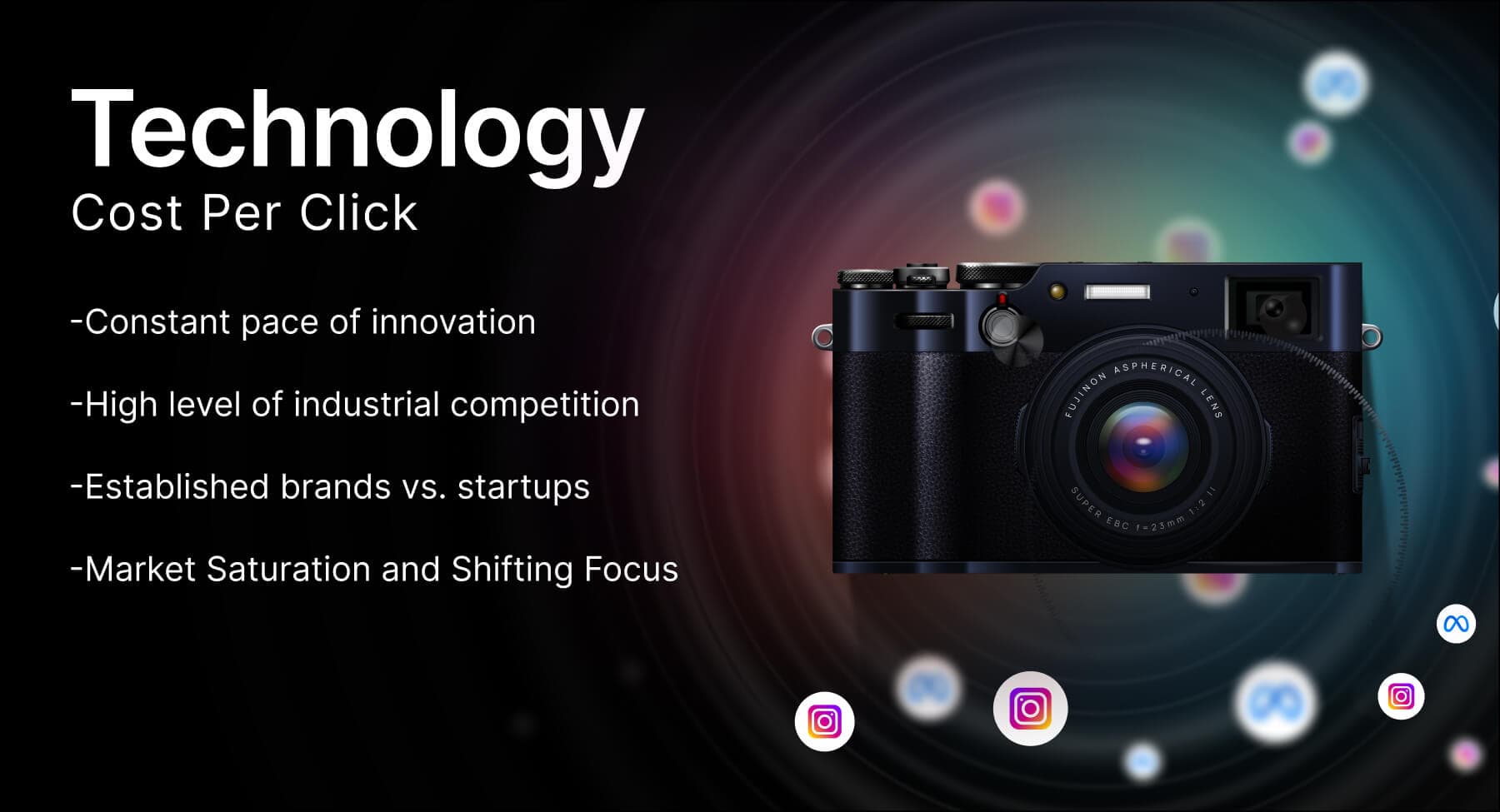
When we're talking about average CPC rates for the tech industry, It's a mixed bag! CPCs in tech can vary greatly depending on what you're selling. Some highly competitive tech niches have sky-high CPCs due to both fierce competition and high demand.
The tech industry is an exciting place where innovation is always happening. There are always new features and functionalities being developed that can enhance user experience. However, it's important to keep in mind that these advancements can have both positive and negative effects on the Cost-Per-Click (CPC) for both established tech brands and startups.
New features in the tech industry are exciting for users, but their impact on cost-per-click (CPC) can be tricky. Here's why:
Surge in Demand, Spike in Costs: Groundbreaking features spark user interest, leading to more searches for related terms. This competition drives up keyword costs for established brands and startups alike. Additionally, platforms prioritize relevant ads, so showcasing the new feature might mean higher CPCs, even for well-known companies.
The Tale of Two Players: Established brands with strong reputations might temporarily dip in CPC as users trust their innovative spirit and click readily. On the other hand, startups with disruptive features might benefit from a surge in organic traffic and brand awareness, leading to lower initial CPCs due to the novelty factor.
But the party doesn't last forever!
Market Saturation and Shifting Focus: As the feature becomes mainstream, keyword competition stabilizes, and CPCs may settle at a potentially higher baseline. User interest eventually moves on to the next big thing, and CPCs for the initial feature could even decline.
Summary:
So, you've clicked your way through the click wars! We've taken a deep dive into the fascinating world of CPCs across retail, fashion, and tech. Think of it as a behind-the-scenes peek at the advertising battle royale happening online! Here's the lowdown:
- Fashion takes the runway when it comes to low CPCs. Eye-catching products and savvy targeting keep their clicks affordable.
- Retail throws down with deals and discounts, but watch out for the quality-over-quantity trap.
- Tech titans face a double-edged sword with innovation. New features drive clicks, but competition can send CPCs soaring.
The takeaway? Understanding CPC is a superpower in the e-commerce world. Use this knowledge to target clicks that convert and keep your advertising budget singing (not weeping)! P.S. Want to join the click-conquering crew? Enhencer AI Ads offers afree health check-up to help you level up your e-commerce game.











